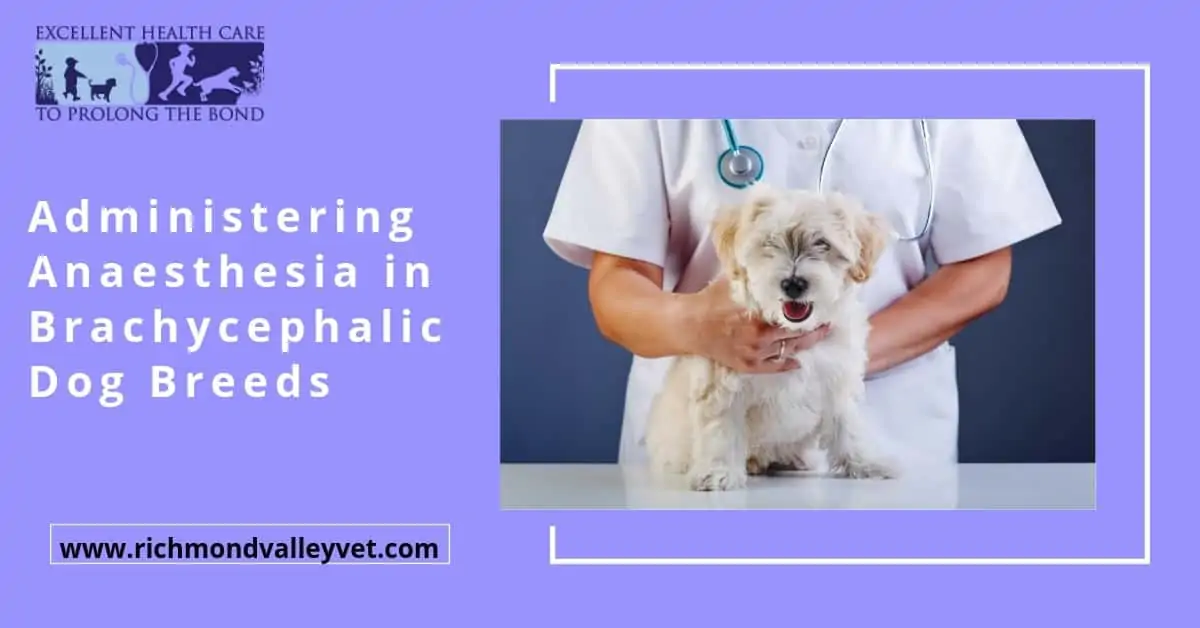
Brachycephalic dog breeds are surprisingly loyal and popular among the pet lovers. The deformity of skull structure in short nosed or brachycephalic dogs makes them look unique.
The flat or punched-in structure of the skull of brachycephalic dogs leads to a constricted arrangement of the facial aspects like mouth, nose, and eyes. This structural deformity causes several health issues in brachycephalic dogs including breathing troubles, dental and eye issues.
If you own a brachycephalic dog, the probability of you getting him a surgery to eradicate or suppress any of the above-mentioned issues is more. Almost all the brachycephalic surgeries include administering anesthesia. Administering anaesthesia to brachycephalic dogs can be an overwhelming task.
Choosing the anaesthetic protocol
Each patient may come with different anatomical complexities or care requirements. It is the duty of the veterinarian to identify such requirements to choose the right anaesthetic protocol.
A complete preanesthetic exam is conducted to choose the anaesthetic protocol for your short-nosed dog. Usually, a complete preanesthetic exam includes physical test, the blood work (blood cell count), hepatic dysfunction test and hydration status check.
Sedating your brachy
Sedating short nosed dog is an important anaesthetic premedication procedure. Usually, a lower dose is administered for short nosed dogs. Higher doses of sedation can cause your brachy to relax a bit more, which can cause the airway muscle to constrict further and enhance the breathing difficulty.
On occasions, where the patient tends to be aggressive or fearful, a higher dose of sedation is administered, followed by regular monitoring.
Administering anaesthesia
The patient is preoxygenated prior to administering anaesthesia. The anaesthesia is administered using the anaesthesia machine. Once the anaesthesia is administered an endotracheal tube or ET is used to continue providing the required agents like O2, Co2 along with other anaesthetic gases. The ET tube also keeps the airway passage from collapsing.
Monitoring protocol
Since brachycephalic dog breeds require special care before, during and after the anaesthetic procedure, it is important to follow the monitoring protocol strictly.
Anaesthesia is maintained by using inhalant like sevoflurane, which is also known to catalyse the recovery of the patient. The heat beat rate, temperature and blood pressure of the patient are periodically monitored using a multiparameter monitor.
Special care is taken to ensure that the body temperature remains normal. The temperature can fall during the procedure. Such conditions can be controlled via a heated surgery table, warm electrical blanket, or even heated fluid bags.
Anaesthetic recovery
The recovery period of your brachycephalic dog is as important as the pre-procedure or the anaesthetic period. The patient is monitored carefully and consistently with all the statistics like blood pressure, temperature and heart rate closely observed.
The possibility of the patient getting desaturated is always taken into consideration and necessary precautions are taken. Prior to extubing the patient, his larynx is inspected to ensure that no foreign object is obstructing the airway.
Brachycephalic dogs require special care even after surgery, you veterinarian will closely monitor the pooch’s respiratory tracts and advice you to come in for a regular checkup with respect to the complexity of the surgery that he had.
